Presentation on Singapore's Voluntary National Review at the UN High Level Political Forum on Sustainable Development - Mr Masagos Zulkifli, Minister for the Environment and Water Resources
PRESENTATION ON SINGAPORE’S VOLUNTARY NATIONAL REVIEW BY MR MASAGOS ZULKIFLI, MINISTER FOR THE ENVIRONMENT AND WATER RESOURCES, AT THE UN HIGH LEVEL POLITICAL FORUM ON SUSTAINABLE DEVELOPMENT, 19 JULY 2018
1 Mr President, Excellencies and distinguished delegates, Singapore is a small island developing state (SIDS), with no natural resources. We are a highly urbanised and densely populated city. In many ways, our circumstances are unique. But the challenges we face are common to many other SIDS.
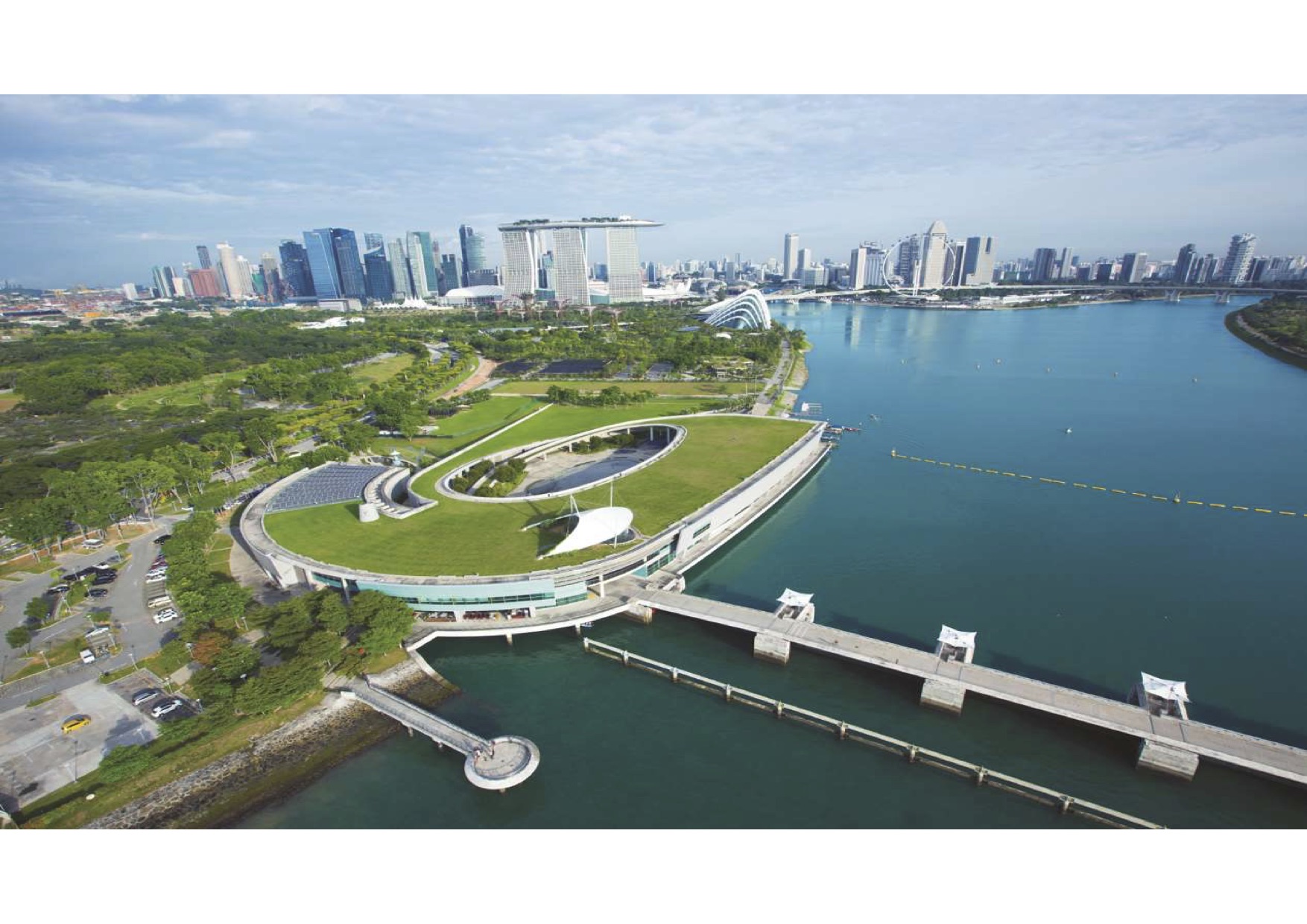
2 Singapore pursued sustainable development even before the term became fashionable. Since independence, we have tried balancing environmental considerations with economic development, believing that the two are complementary, not contradictory.
3 With the focus on improving our people’s lives, the Government has built a clean and green Singapore, where our people can lead healthy and fulfilling lives, with good jobs, good education and adequate shelter for everyone.
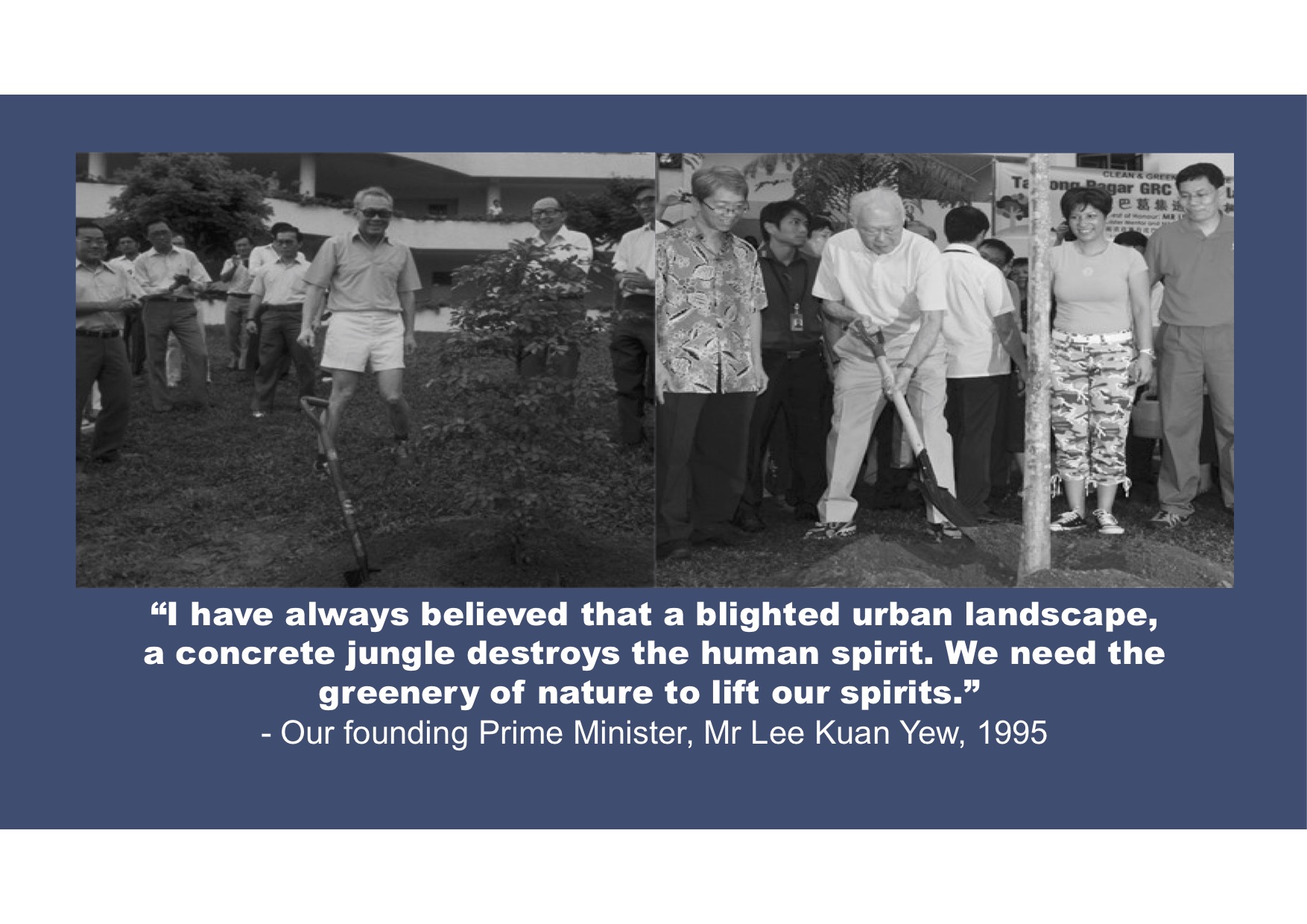
Mr Lee Kuan Yew’s Philosophy
4 Our first Prime Minister, Mr Lee Kuan Yew, is the architect of Singapore’s transformation. He focused on creating a “garden city”, planted the first tree in 1963, which kick-started the annual Tree Planting Campaign. Today, we are building on the legacy of our pioneer leaders and transforming Singapore into a “City in a Garden”.
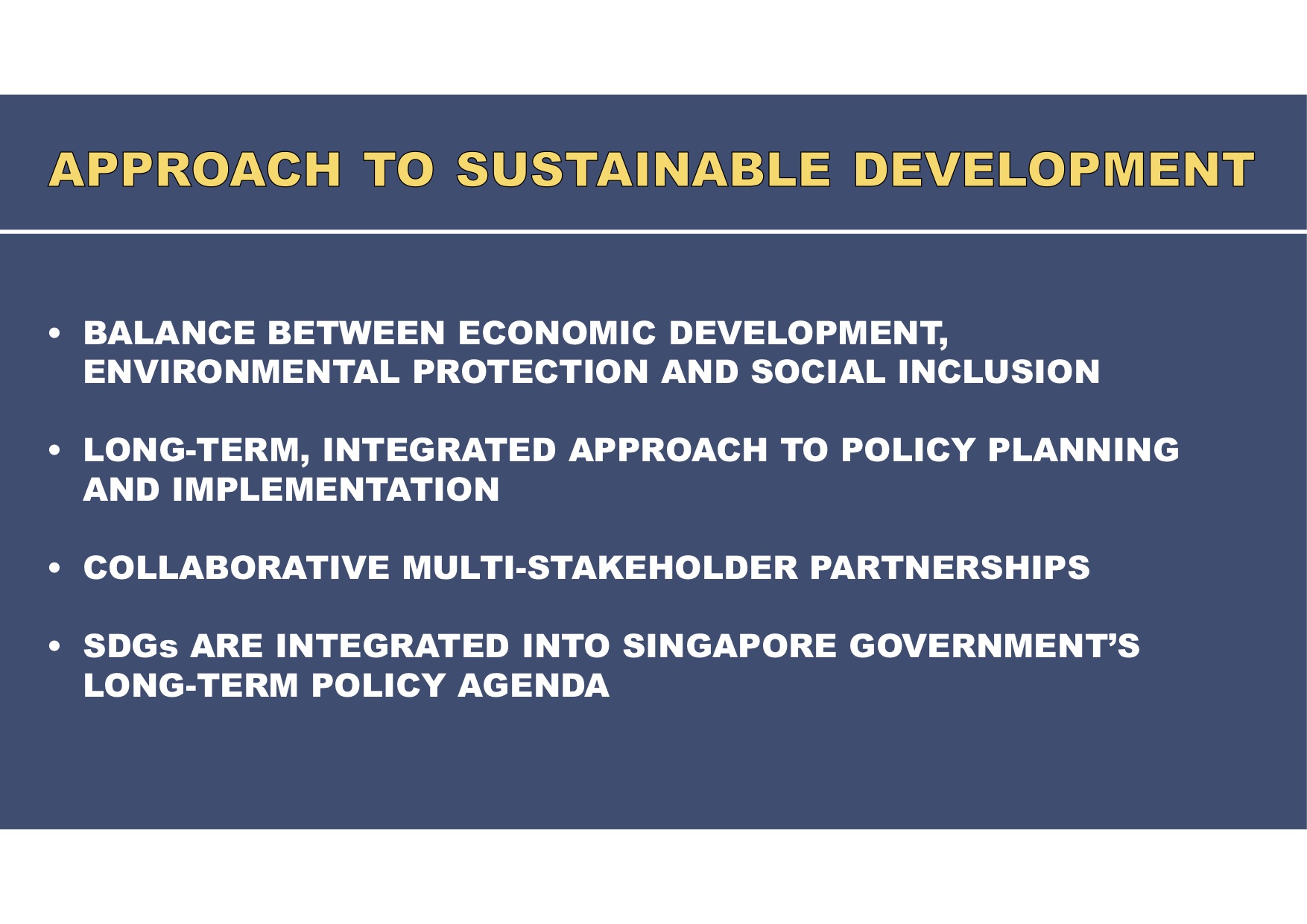
Approach to sustainable development
5 Singapore’s approach to sustainable development has three elements: First, balancing economic development with environmental protection and social inclusion; Second, pursuing a long-term, integrated approach to policy planning and implementation; and Third, building collaborative multi-stakeholder partnerships to support policy formulation and implementation.
6 For Singapore, the 2030 Agenda for Sustainable Development (2030 Agenda) is a framework to benchmark government policies. The 17 Sustainable Development Goals (SDGs) are integrated into the Government’s long-term agenda. This was articulated by our President Halimah Yacob at the opening of our Parliament in May.
7 We had used the Voluntary National Review (VNR) process to increase public engagement and awareness of the 2030 Agenda, and mobilised more than 30 ministries and agencies to prepare our VNR. Let me now touch on Singapore’s progress in implementing the 6 SDGs in focus.
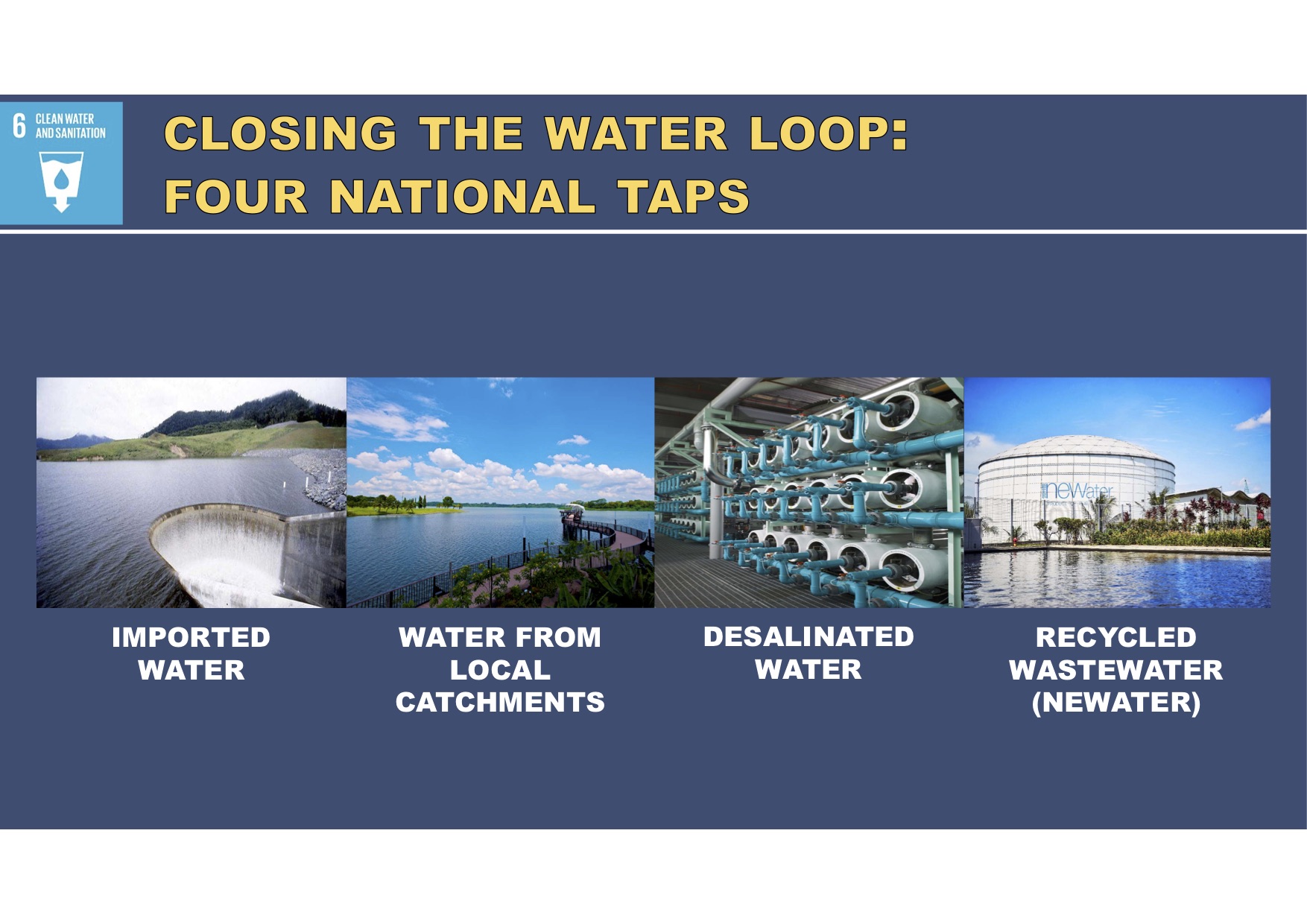
Closing the water loop: Four National Taps
8 On SDG 6, the World Resources Institute ranks Singapore as the country most at risk of water stress by 2040. To ensure water resilience and sustainability, we have developed a robust and diversified water supply system called our Four National Taps – imported water, water from local catchments, desalinated water and recycled wastewater which we call NEWater. Over the years, we have enhanced our water sustainability by closing the water loop and collaborating with the private sector to develop and deploy new technologies.
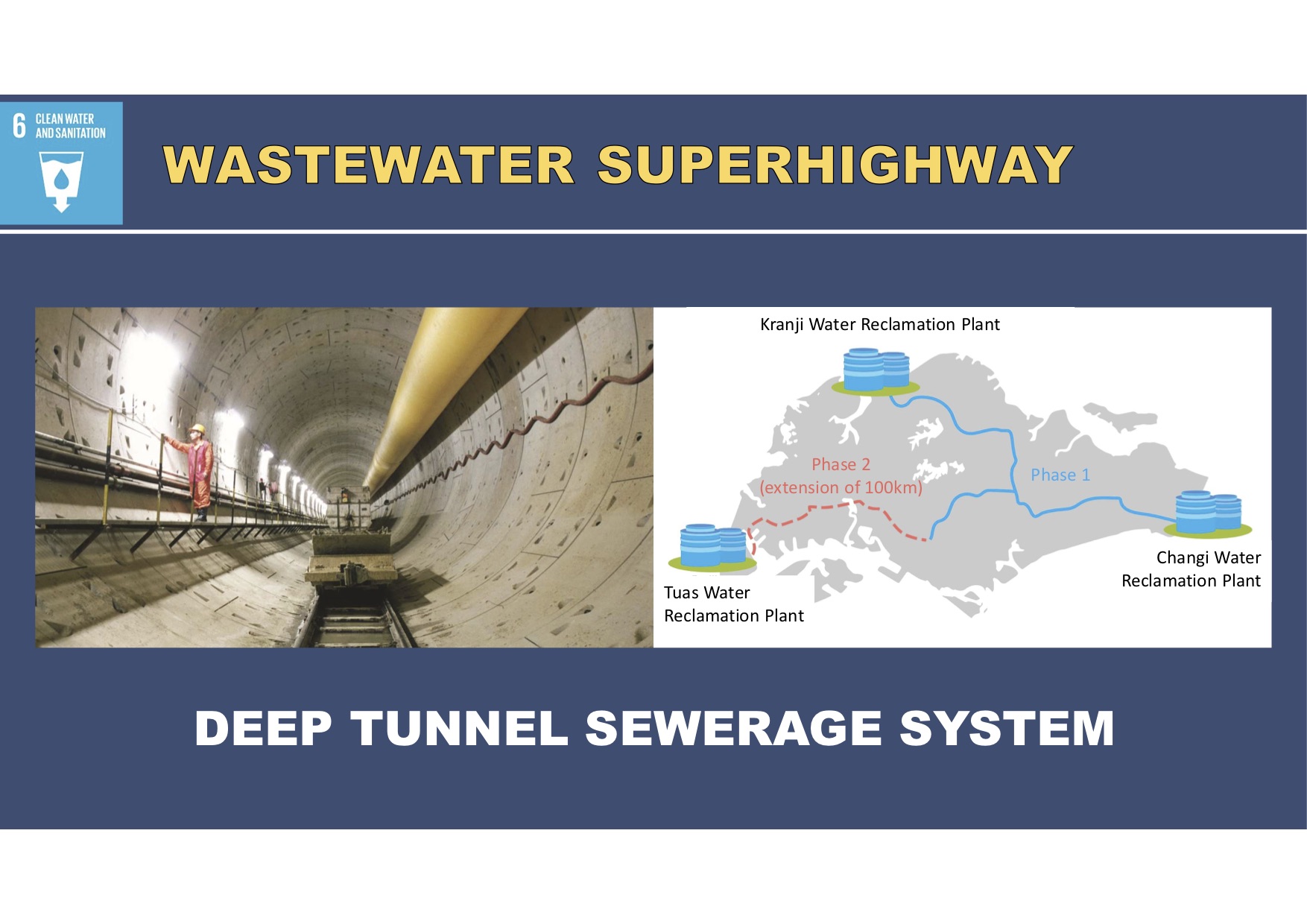
Wastewater Superhighway
9 Our national water recycling system collects and treats every drop of wastewater and transforms it into NEWater – Singapore’s ultra-clean, high-grade reclaimed water. We have built a wastewater superhighway, the Deep Tunnel Sewerage System, to collect and transport wastewater. The current tunnel, 48km long and linked to 60km of sewers, will be extended by 100km by 2025 to transport and turn more wastewater into NEWater for industrial use and domestic consumption.
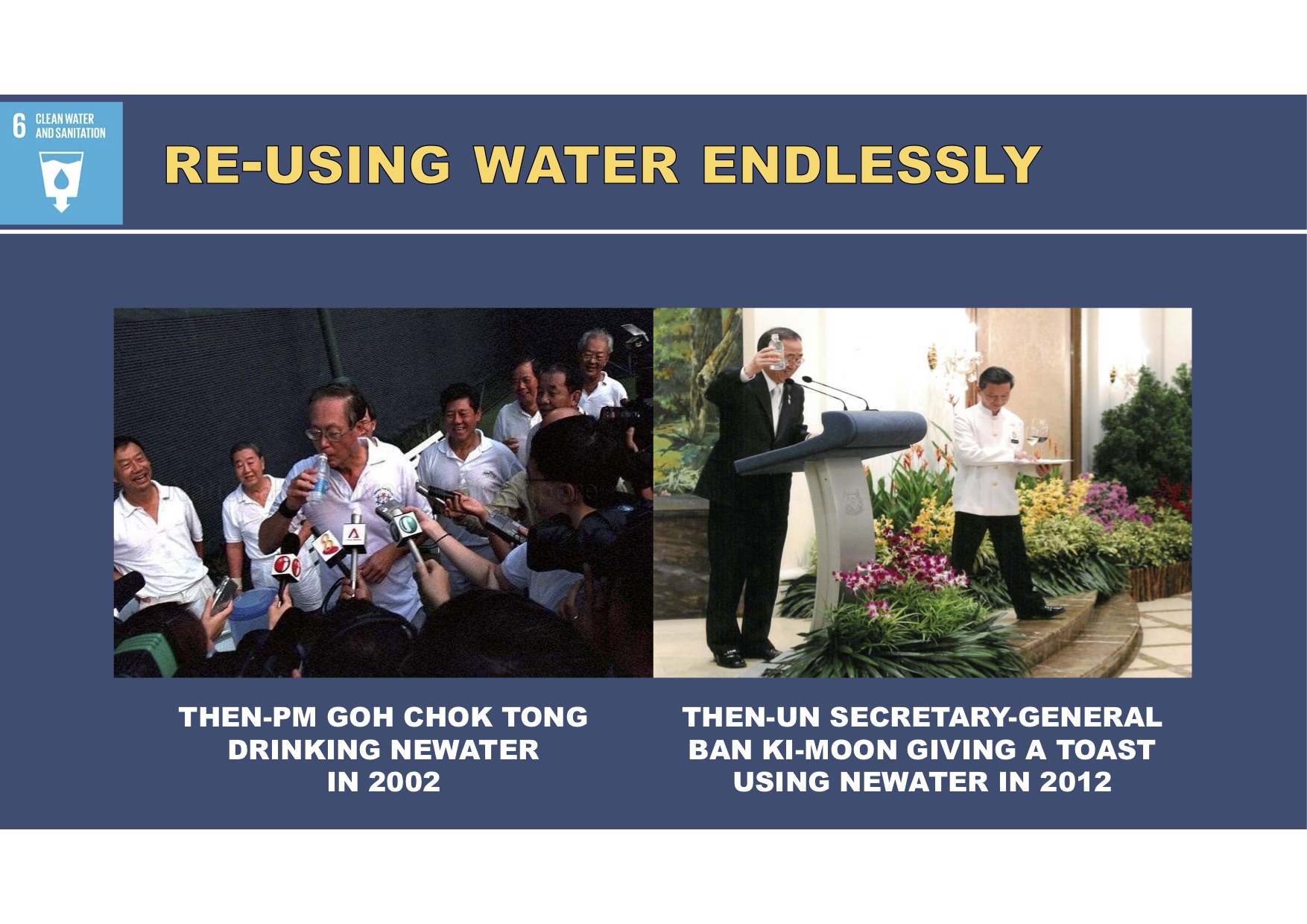
Re-using water endlessly
10 By reusing water endlessly, NEWater cushions our water supply against dry weather, enhancing Singapore’s water sustainability and resilience to shifting climatic patterns. Former UN Secretary-General Ban Ki-Moon called it the “elixir of life” when he visited Singapore in 2012. We are happy to share our water journey through our exhibition along the Vienna café and B1 lobby right here in the UN.
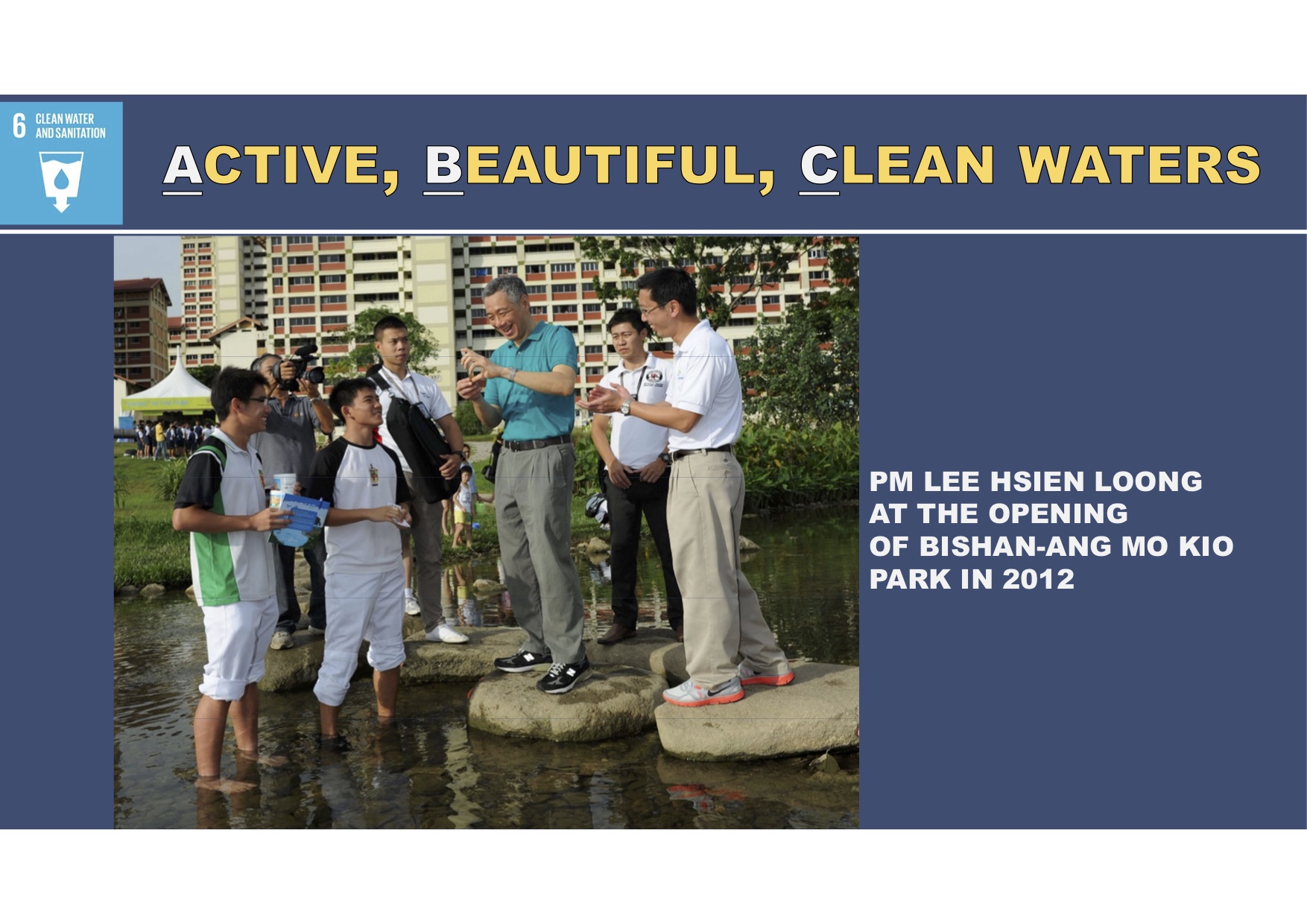
ABC Waters
11 Besides providing clean drinking water, we want to bring Singaporeans close to water so they become stewards of water and our environment. Through the Active, Beautiful, and Clean (ABC Waters) programme, we are transforming Singapore’s drains, canals and reservoirs into streams, rivers and lakes. This enriches our biodiversity and enhances our urban landscape with spaces for recreation and social bonding. This is our Bishan-Ang Mo Kio Park project, which used to be an old concrete canal. It is now a place where families gather and children play. We will implement 100 ABC Waters projects by 2030.

Reducing emissions across all sectors
12 Now, I move on to SDG 7. As a member of the Alliance of Small Island States (AOSIS), Singapore has been a strong advocate of ambitious action against climate change. We pledged at the Paris Conference to reduce our emissions intensity by 36% from 2005 levels by 2030, and to stabilise our emissions with the aim of peaking around the same time. We will be one of the first Asian nations to implement a national carbon tax across all sectors without any exemption from 2019. This will incentivise emissions reduction and encourage companies to transit to a low-carbon future. Under our Climate Action Plan, we will increase energy efficiency and reduce the carbon footprint across all economic sectors.
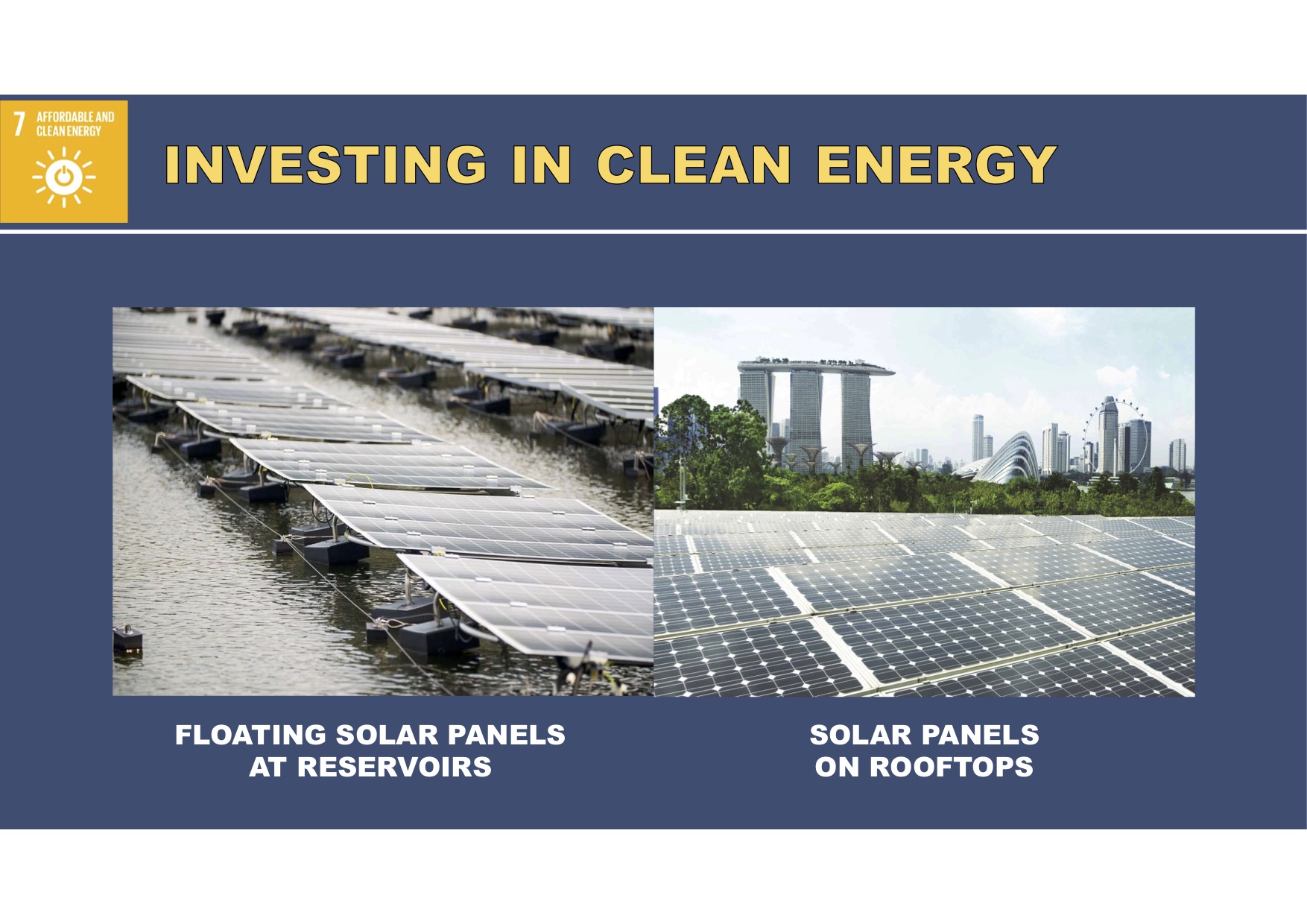
Investing in clean energy
13 Today, 95% of our electricity is generated from natural gas, the cleanest form of fossil fuel. We are also aggressively developing solar energy. Our goal is to increase solar photovoltaic deployment to 350 megawatt-peak by 2020, and to 1 gigawatt-peak beyond 2020. We have installed solar panels on the rooftops of public housing blocks and launched the world’s largest floating solar PV test-bed. We are investing in breakthrough technologies, such as developing solar panels for integration into the building facade.

Closing the waste loop: Food waste
14 Let me now touch on SDG 12. As a resource-constrained nation, Singapore’s vision is to close the waste loop, just as we have closed the water loop. By practising the 3Rs: Reduce, Re-use and Recycle, we aim to minimise waste and engage in urban mining by extracting valuable resources from waste.
15 We are tackling food waste as a priority. We have installed food waste digesters in schools, hotels, shopping malls and food centres to treat food waste on-site, turning them into fertiliser and non-potable water. We are piloting district-level food waste treatment, where food waste is collected and co-digested with used water sludge to produce biogas.

Closing the waste loop: E-waste
16 Sustainable consumption and production require all stakeholders to participate. To develop a circular economy, Singapore will introduce the Extended Producer Responsibility (EPR) framework. Businesses will be responsible for their products at the end-of-life, ensuring their proper recycling and disposal. We will start by implementing the EPR framework for electronic waste and consider extending it to other waste streams, such as packaging.
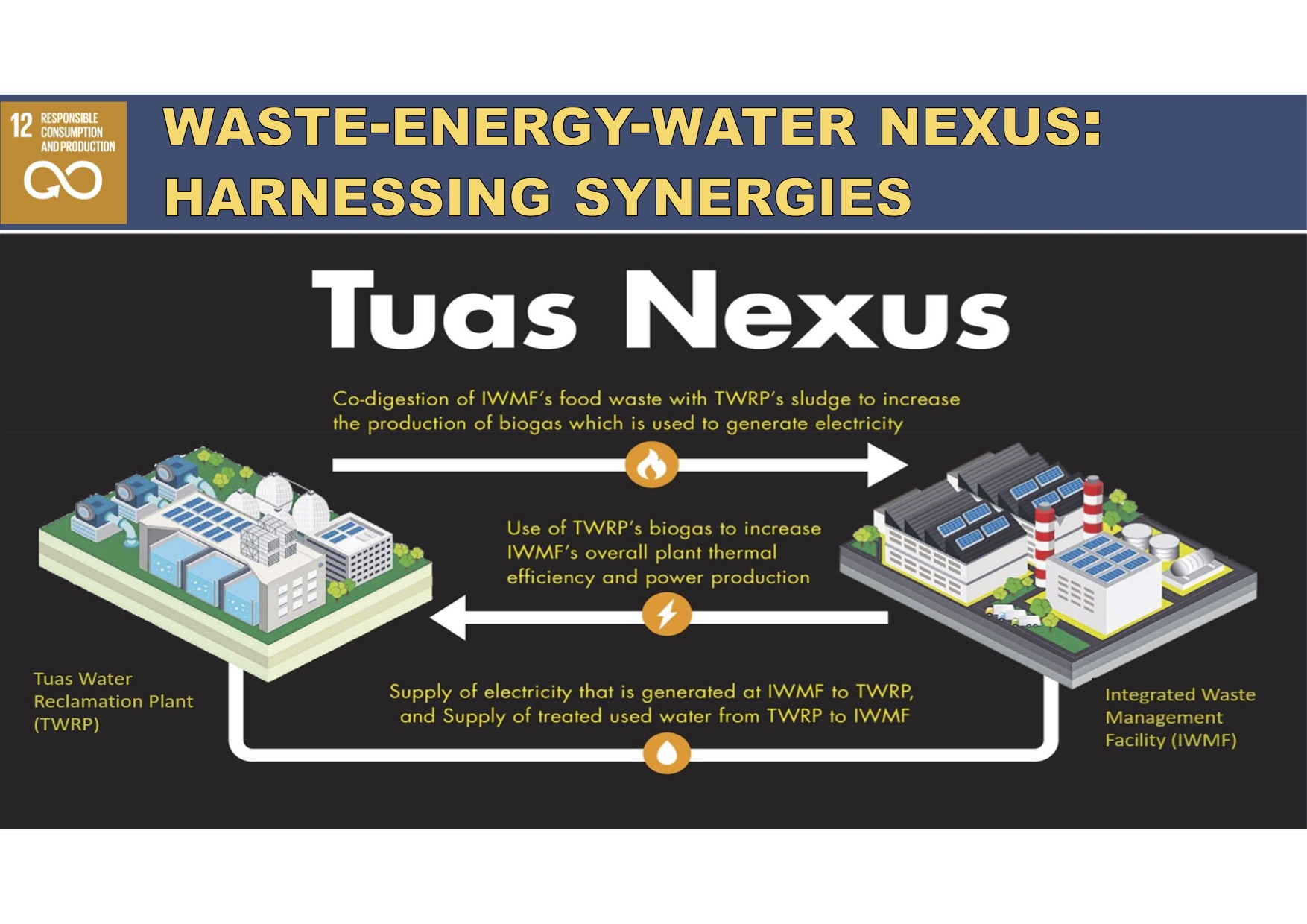
Waste-Energy-Water Nexus: Harnessing Synergies
17 A first in the world, Tuas Nexus will be the hallmark of our efforts to close the resource loops. Going beyond closing the water and waste loops, it will undertake wastewater treatment and solid waste management, all on one site to harness synergies from the waste-energy-water nexus. It will use the latest technology in combustion to maximise energy recovery. More than 200,000 tonnes of CO2 emissions can be avoided annually, the equivalent of taking 41,000 cars off the road.
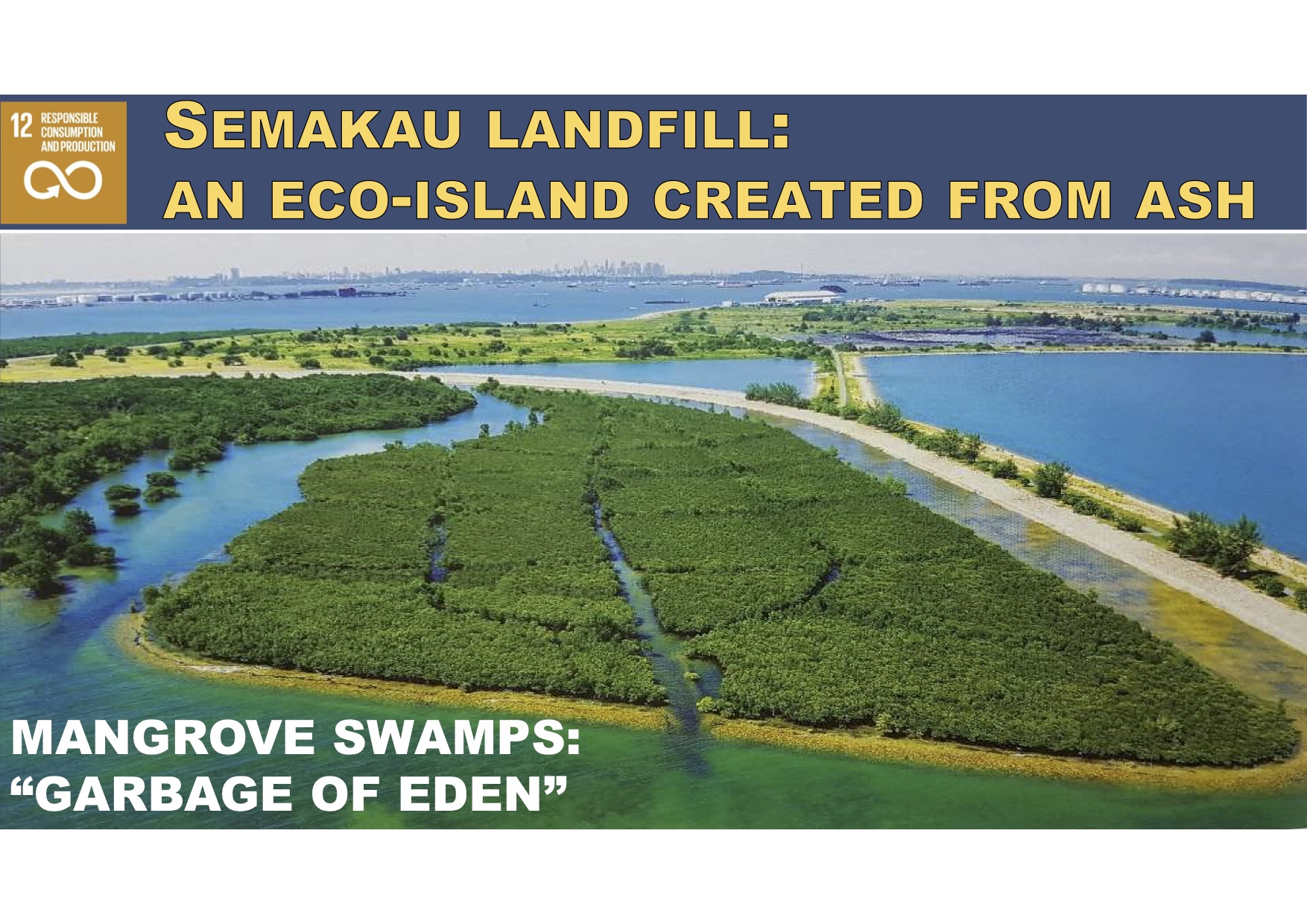
Semakau Landfill
18 Semakau is Singapore’s last landfill. Even on a landfill, we are serious about nature and biodiversity. The thriving flora and fauna, such as this mangrove swamp, shows the ecosystem has been well-protected. Marine life and migratory birds are also making this island their home. New Scientist magazine dubbed the landfill “Garbage of Eden”.
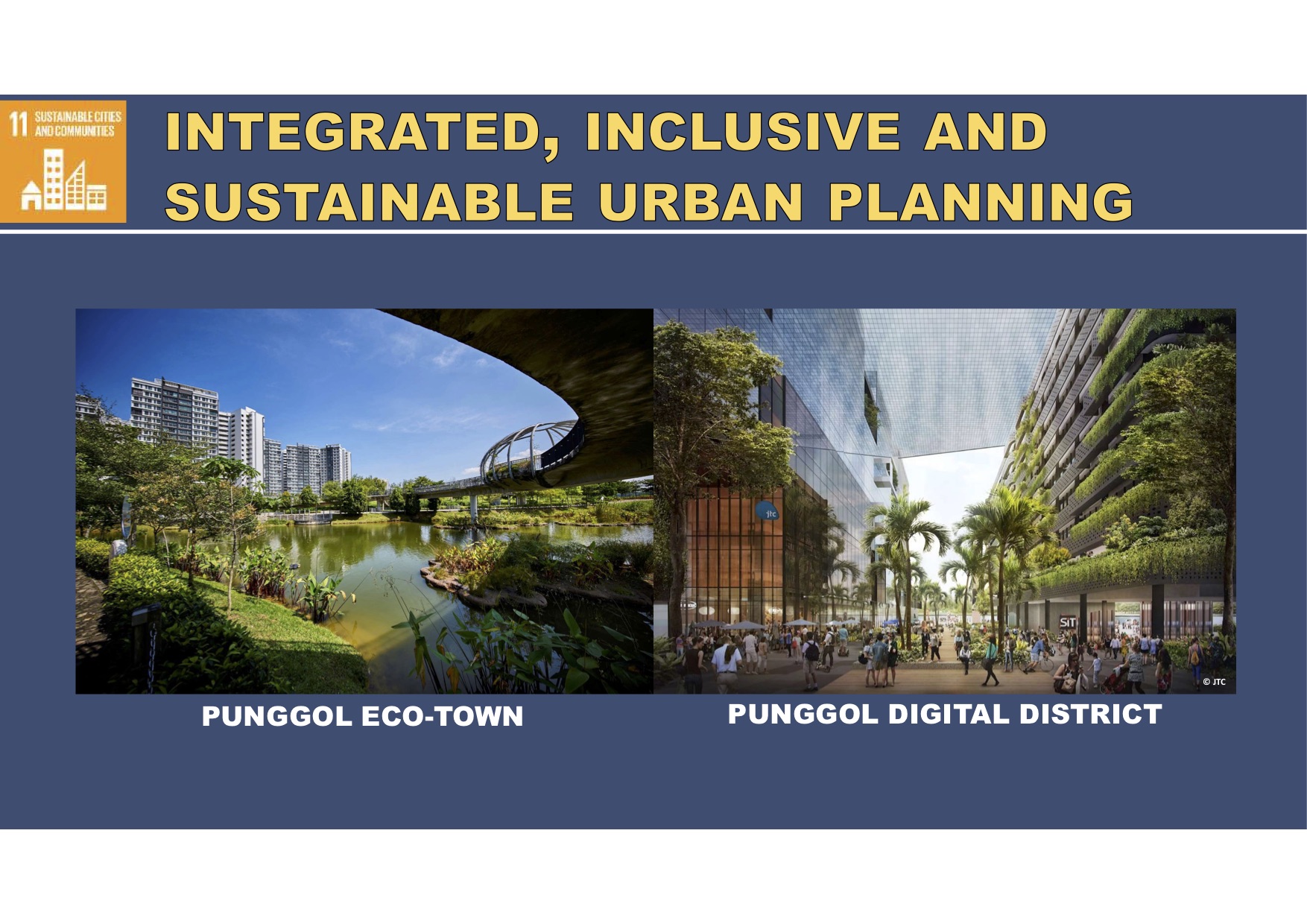
Integrated, inclusive and sustainable urban planning
19 Moving on to SDG 11, to achieve a highly liveable, inclusive, and sustainable urban environment, integrated long-term planning is key. We are piloting enterprise districts, which bring together high-value industries with institutes of learning and a residential community. We have a 5-year Masterplan to integrate persons with disabilities into the workforce and society. Punggol New Town is home to Singapore’s first eco-precinct for green building technologies, and the Punggol Digital District is built purposefully for the cybersecurity and digital media industries.
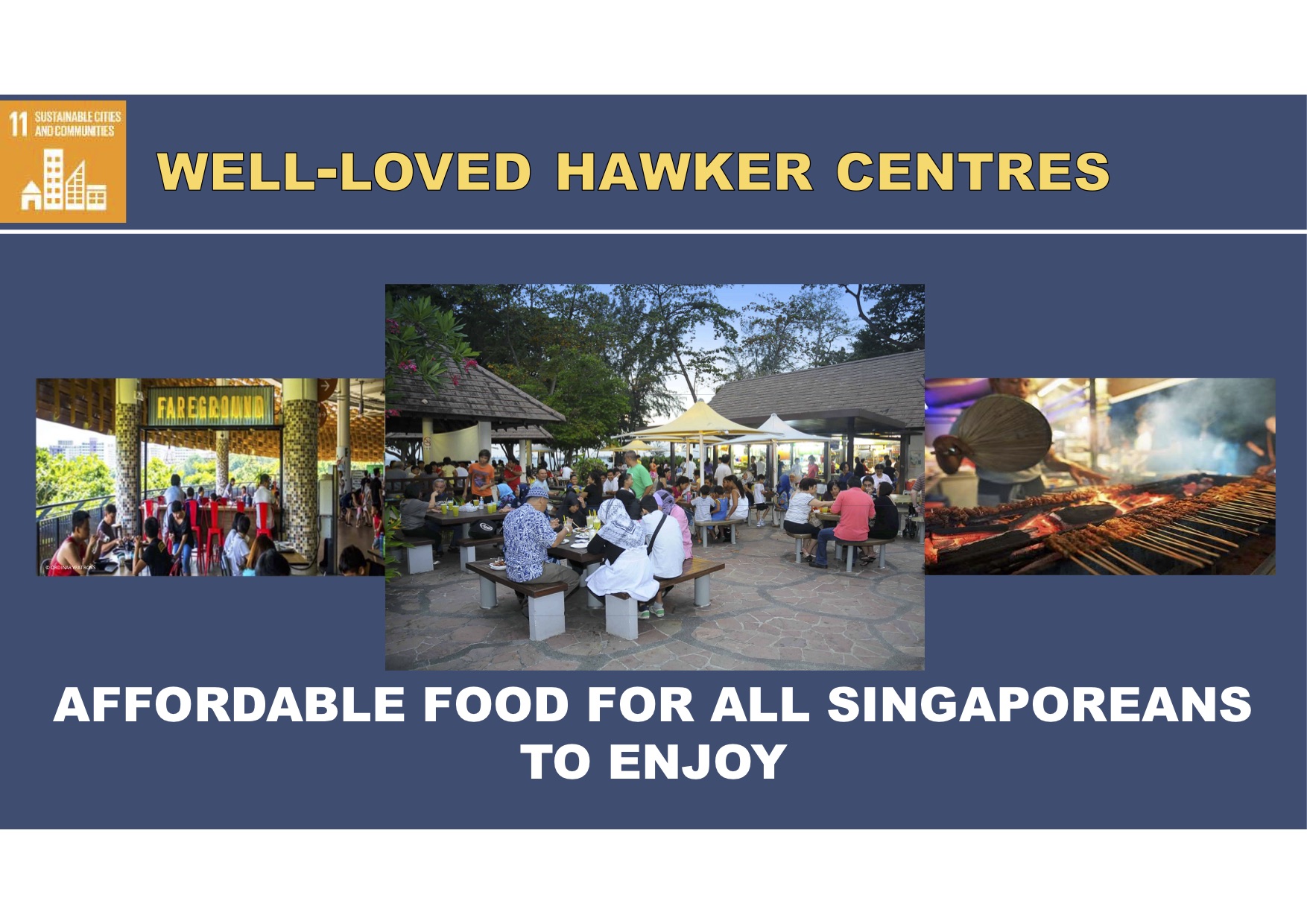
Well-loved hawker centres
20 For a multi-racial and multi religious country like Singapore, the heart of sustainable development lies in social inclusion. Hawker centres are an integral part of Singaporeans’ daily lives and are found across the island. Besides serving affordable and delicious dishes, they are places where Singaporeans, regardless of race, religion and social background,connect through our shared love for food. Food certainly unites Singaporeans.
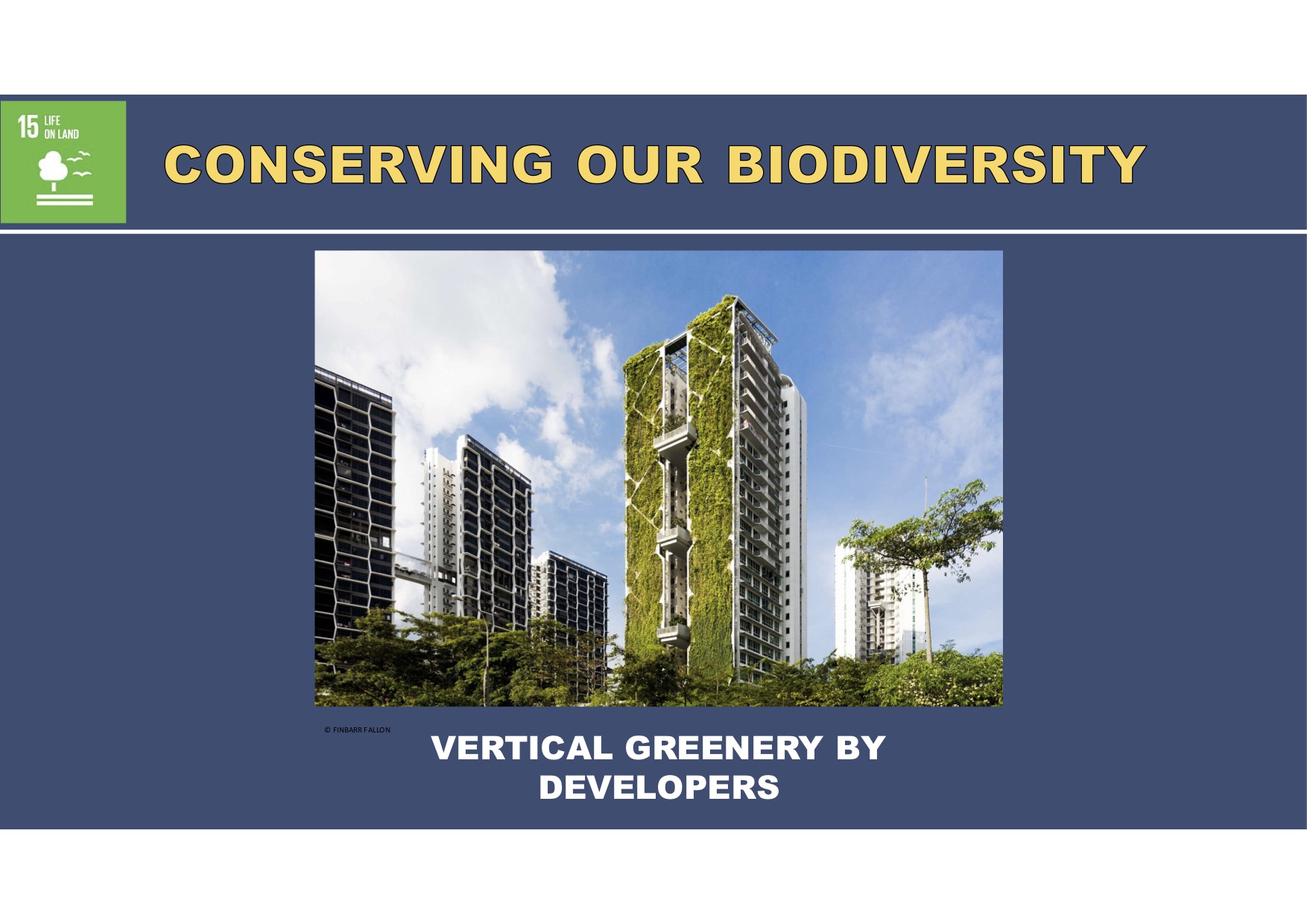
Conserving biodiversity (Vertical greenery)
21 Globally, Singapore ranks first in urban tree density. Green cover has increased to more than 40% since our Tree Planting Campaign started in 1963. To enhance greenery in our built environment, Singapore encourages developers to integrate rooftop and vertical greenery. Besides beautifying the city, these measures cool the urban microclimate and provide refuge for biodiversity.
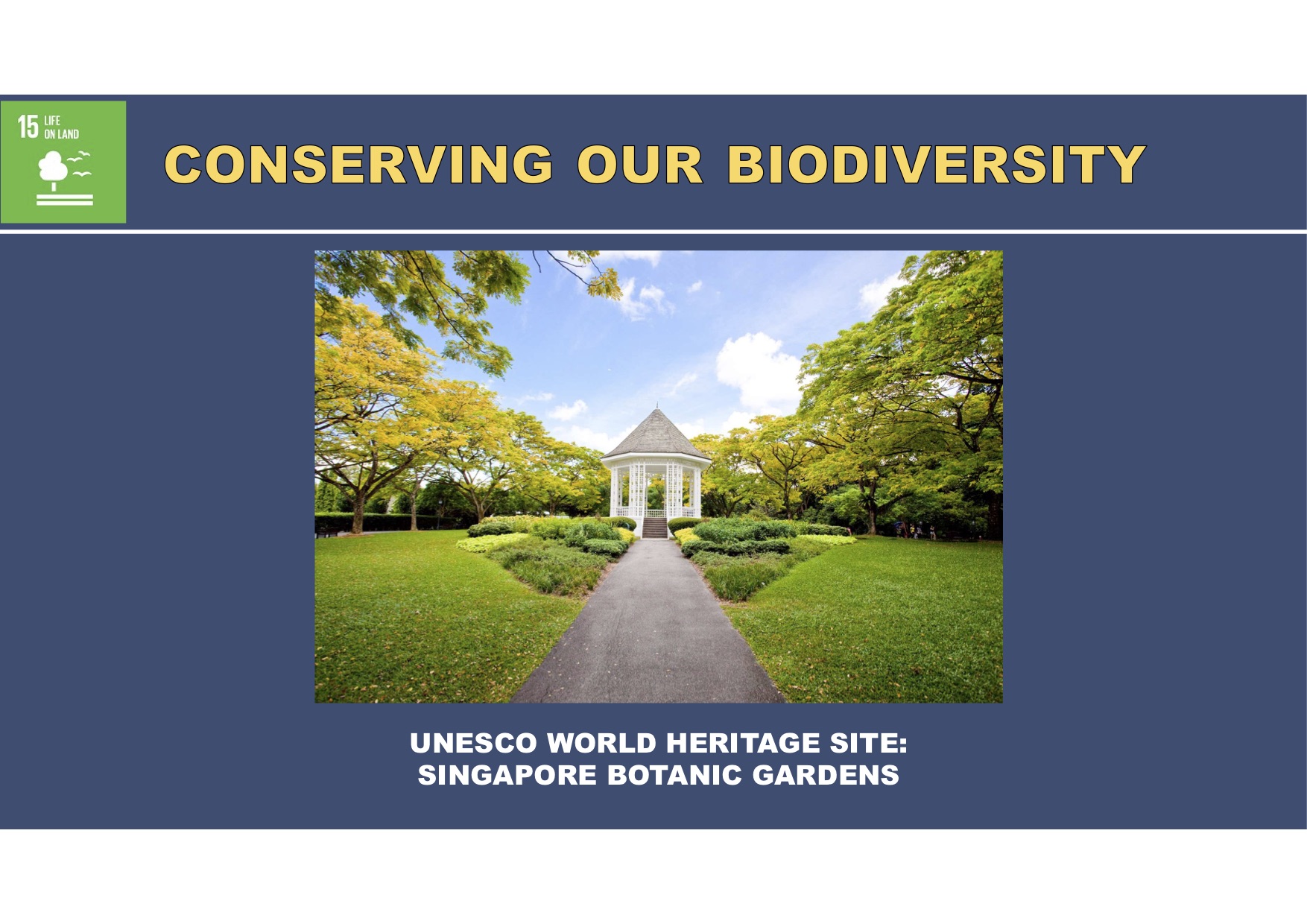
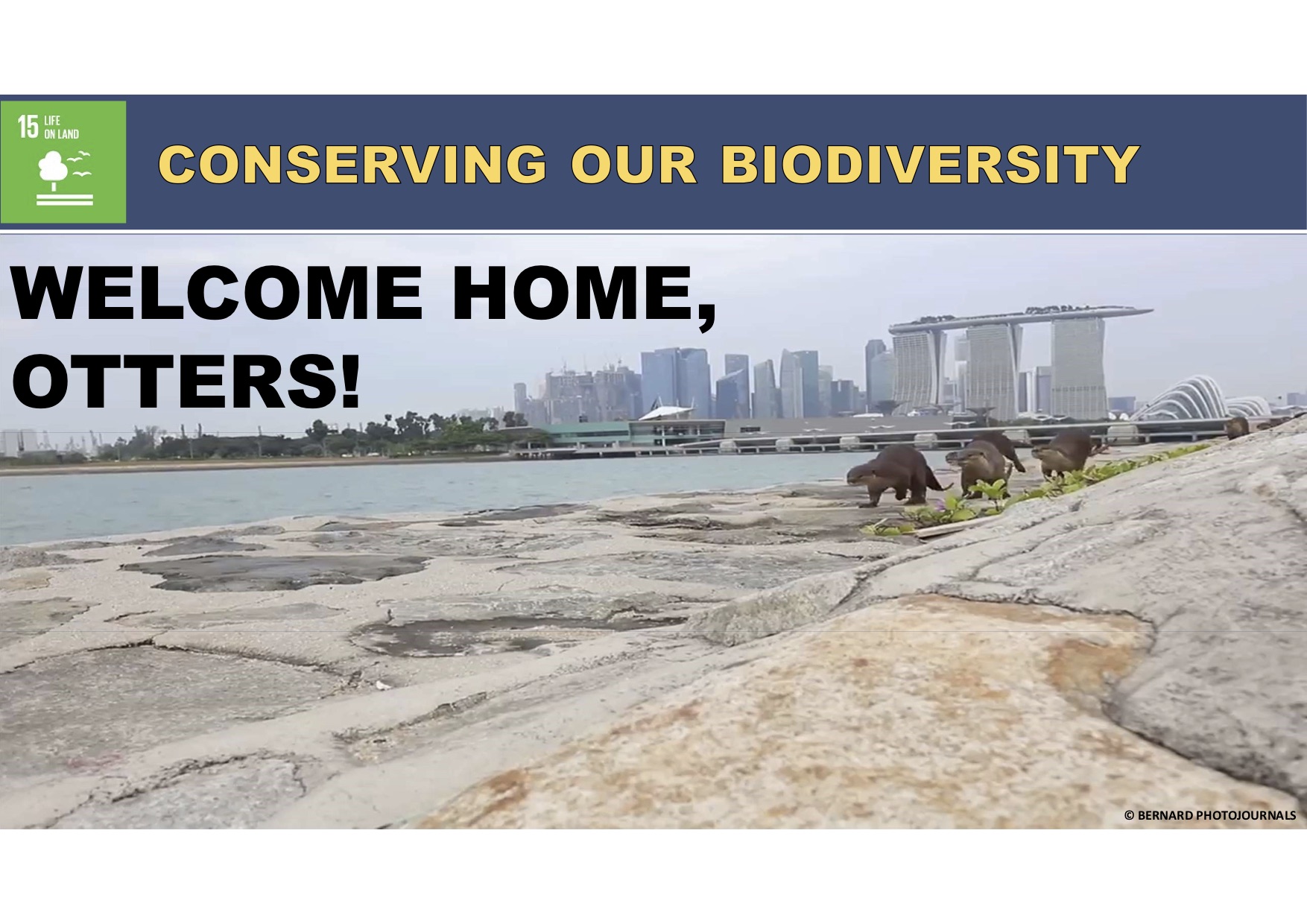
Conserving biodiversity (Botanic Gardens)
22 The Singapore Botanic Gardens is the first and only tropical botanic garden on UNESCO’s World Heritage List. We have conserved primary and secondary rainforest right in the heart of our city. Scientists have made exciting discoveries – finding new species or rediscovering species thought lost. Today, Singapore has over 40,000 kinds of terrestrial and marine organisms, such as these otters which have starred in a David Attenborough documentary about Singapore’s wildlife.
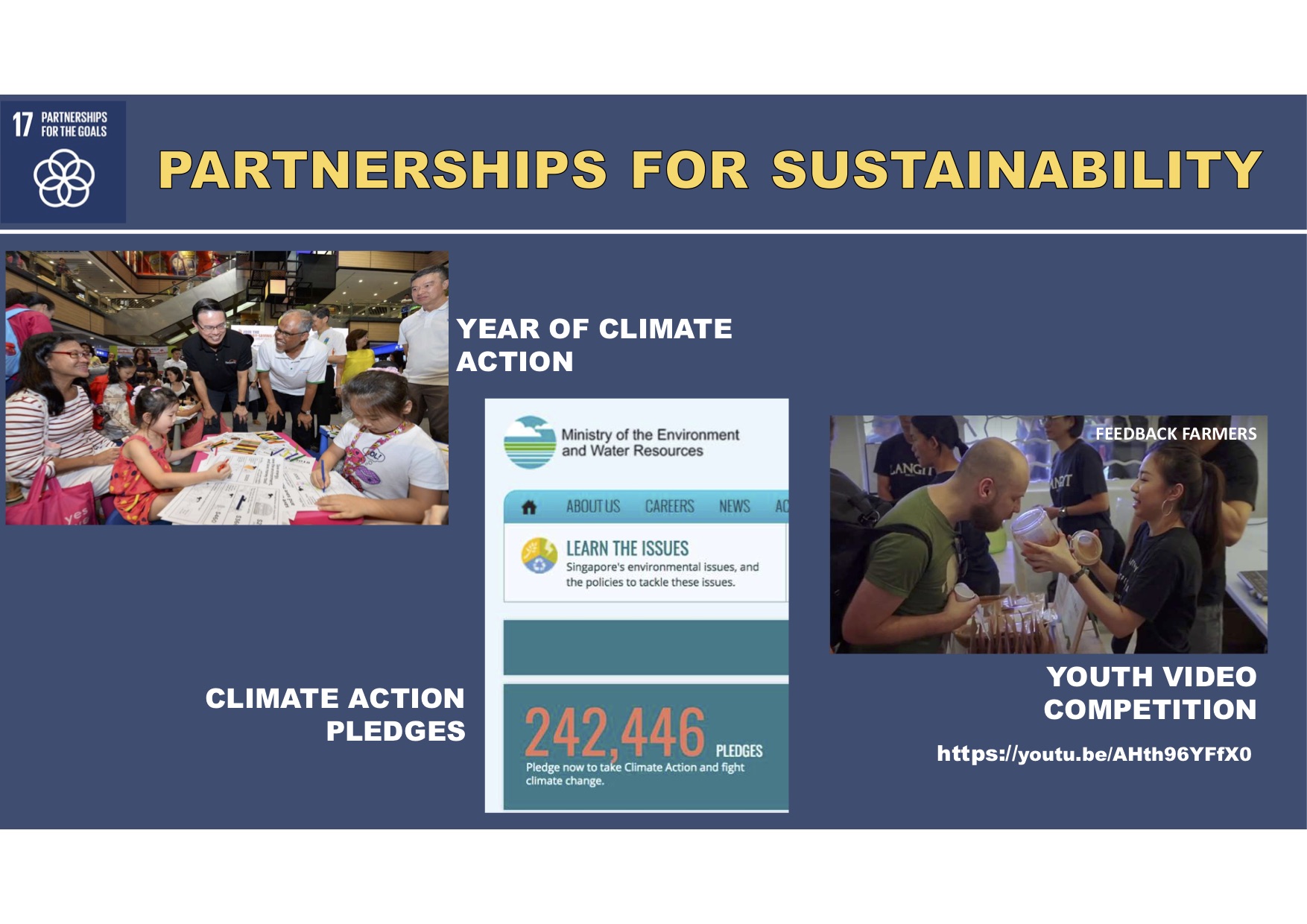
23 Finally, on SDG 17, sustainable development in Singapore is a Whole-of-Nation effort based on collaborative multi-stakeholder partnerships. We declared 2018 as the Year of Climate Action to raise awareness and encourage action across the nation. In 6 months, close to a quarter of million Singaporeans, business corporations and Civil Society Organisations have pledged to save energy and water, practise recycling and fight climate change. On the podium with me today are representatives from the Singapore Environment Council, Ms Jen Teo, and Sustainable Living Lab, Mr Veerappan Swaminathan, who play critical roles in galvanising ground-up action.
24 Also present today are the youth winners, Frieda, Robin and Wei Han, of a video competition on creative ideas for sustainability which we organised as part of our VNR. Youths are leaders and champions of sustainable development.

International Partnerships
25 Partnerships are key to sustainability. For a decade, Singapore has been hosting the World Cities Summit, Singapore International Water Week and Clean-Enviro Summit Singapore to share and co-create solutions for urban sustainability. The most recent edition was held last week, attracting 24,000 attendees from 110 countries.
26 Last week, as Chair of ASEAN, Singapore convened the Special ASEAN Ministerial Meeting on Climate Action, and together with key partners, reaffirmed our commitment to the Paris Agreement and regional action to tackle climate change. I also announced a special Climate Action Package to develop capacity in the region in this key area.
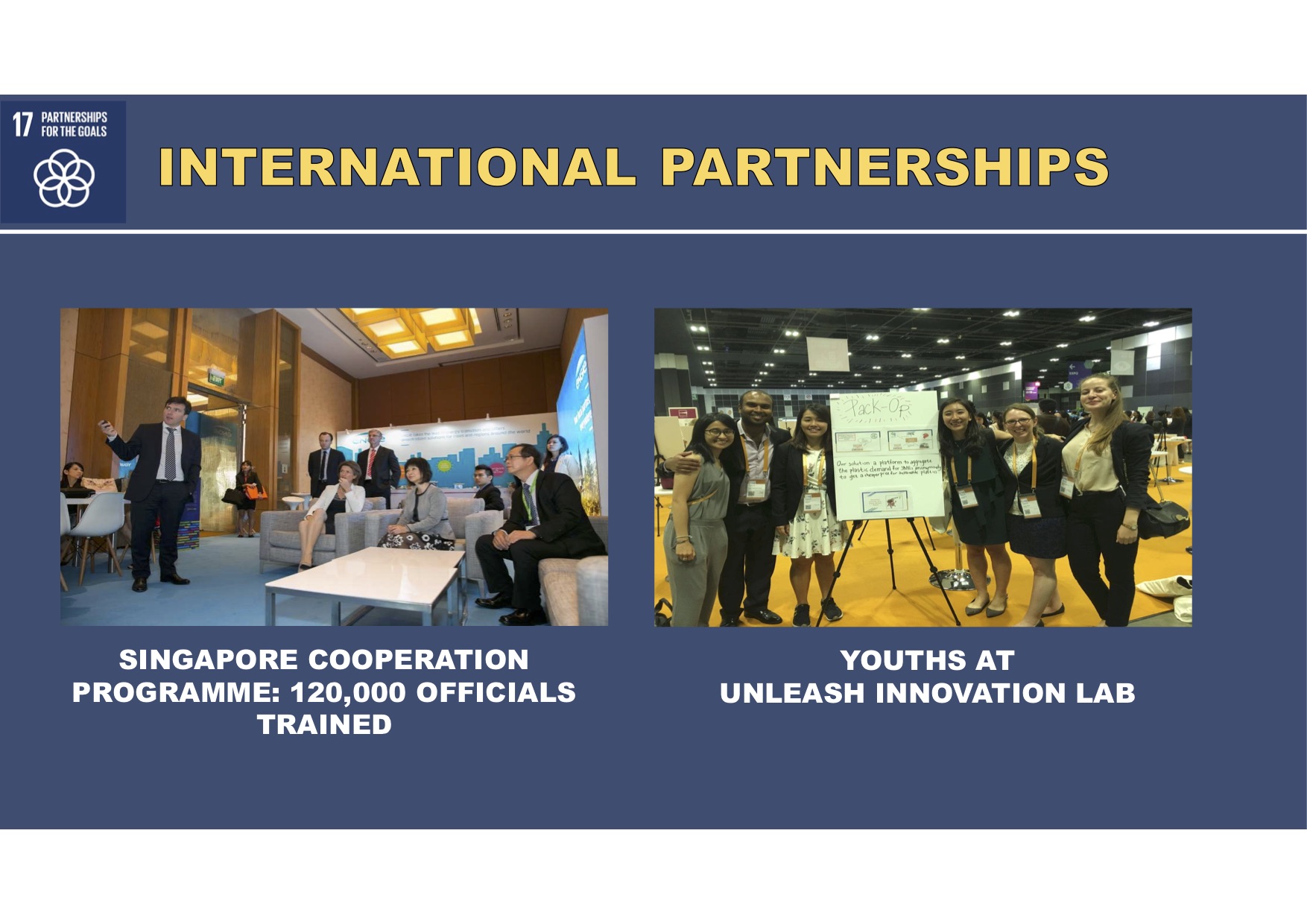
27 In this spirit, Singapore has been sharing our development experience with fellow developing countries through the Singapore Cooperation Programme. Since 1992, we have trained 120,000 officials. We also hosted around 1,000 youths in the UNLEASH Innovation Lab to co-create solutions for the 2030 Agenda.

Conclusion
28 In conclusion, sustainable development means providing for the needs of the present without compromising the interests of future generations. A Chinese proverb says that “one generation plants the trees and the next generation enjoys the shade”. Beyond harvesting for ourselves, we must plant seeds and grow trees. We must empower our youths to take climate action to ensure our planet’s sustainability and resilience. Together, let’s work towards the shared goals of the 2030 Agenda.
Thank you.

